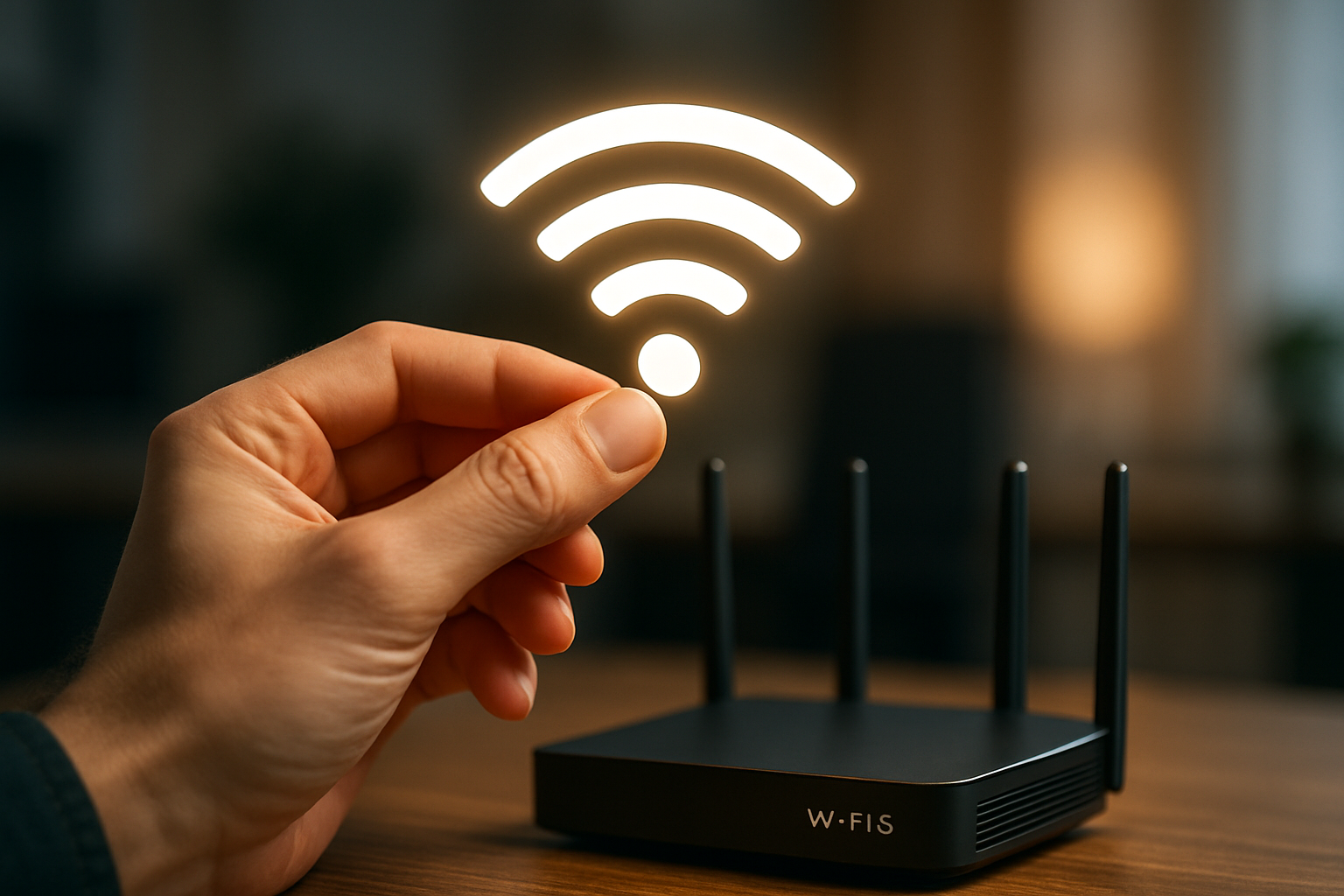How to Get Cable-Free Home Internet in the US in 2025
Discover practical cable-free internet options tailored to your location and requirements, helping you save money and enjoy uninterrupted connectivity at home starting now. Explore dependable choices with flexible plans designed for your lifestyle, ensuring fast speeds and steady access wherever you are.

Wireless Internet as a Cable-Free Solution
Wireless internet services in 2025 offer internet access without the need for physical cables or phone lines inside your residence. These connections use radio signals, cellular networks, or satellites to provide internet service.
5G Home Internet: Wireless Connectivity Using Cellular Networks
- How it works:5G home internet utilizes cellular networks for broadband access. A plug-and-play indoor receiver or gateway links to nearby 5G towers, delivering internet without wired connections.
- Speed & Performance:Speeds vary, typically ranging from 50 Mbps to over 300 Mbps depending on location and network conditions. Many plans provide unlimited data. This service can support activities like gaming, HD streaming, and video conferencing.
- Installation:Generally self-installation with minimal effort; a technician visit is rarely necessary.
- Availability:Coverage is growing, especially in urban and suburban regions. Major providers such as T-Mobile offer 5G home internet plans.
- Cost:Plans often start near $50 per month and may feature unlimited data without long-term contracts.
Fixed Wireless Internet: Wireless Service for Areas Without Cable Infrastructure
- How it works:Fixed wireless employs an outdoor antenna mounted at the residence that connects via line-of-sight to a local transmission tower, delivering internet wirelessly.
- Speed & Performance:Typically offers speeds between 25 and 100 Mbps, suitable for browsing, video streaming, and video calls.
- Installation:Usually requires professional setup of the outdoor antenna.
- Availability:Common in rural or underserved regions lacking cable infrastructure.
- Cost:Plans generally cost around $50 monthly with frequent unlimited data options.
Satellite Internet: Service for Remote Locations
- How it works:Satellite internet operates through satellites orbiting Earth communicating with a dish installed on the property. Recent low-Earth orbit (LEO) satellite systems, like Starlink, offer better speeds and lower latency than traditional satellite internet.
- Speed & Performance:Speeds normally range from 50 to 200 Mbps. Latency can be higher than terrestrial wireless but supports streaming and video conferencing.
- Installation:Requires professional installation of a satellite dish with a clear view of the sky.
- Availability:Accessible nationwide, including extremely remote areas where other internet options are unavailable.
- Cost:Monthly fees typically range between $50 and $65 or more. Some plans may have data caps or prioritized data allowances.
Fiber Internet without Cable TV Bundles
Fiber internet usually involves wired connections, but some providers now deliver standalone fiber internet services without requiring cable TV or phone bundles.
- Example:In 2025, T-Mobile Fiber launched a standalone fiber internet service offering symmetrical speeds up to 2 Gbps.
- Installation:Typically requires professional installation that includes fiber optic cables to the home. Cable TV service is not mandatory.
- Cost:Plans generally begin around $75 monthly for 500 Mbps symmetrical speeds. Discounts may be available for existing customers.
Considerations for Choosing Cable-Free Internet Options
Choosing the right cable-free internet depends on factors like your location, usage habits, and budget.
Location Considerations
- Urban and Suburban Areas:5G home internet can provide convenient wireless connectivity where coverage exists, needing only plug-and-play equipment.
- Rural and Underserved Areas:Fixed wireless internet offers a good balance of performance and price when line-of-sight to transmission towers is present.
- Remote Locations:Satellite internet is often the best choice where terrestrial wireless coverage is lacking.
- Fiber Availability:If standalone fiber is available locally, it can deliver high speeds and reliable connections, though it needs physical installation.
Usage and Speed Needs
- Basic Browsing and Streaming:Speeds of 25 to 50 Mbps typically suffice for common household activities.
- Multiple Users and HD/4K Streaming:Plans offering 100 to 300 Mbps better handle multiple simultaneous users and higher-quality streaming.
- Online Gaming and Remote Work:Low-latency options such as 5G home internet or fiber provide a more responsive experience.
Budget Considerations
- Wireless options like 5G home internet and fixed wireless often start around $50 monthly with unlimited data.
- Satellite internet plans tend to be somewhat more expensive and might have data limits.
- Fiber internet plans usually start higher but offer faster symmetrical speeds.
Checking Availability
- Providers’ websites typically include coverage checkers (e.g., T-Mobile’s tool) for confirming service at your address.
- The FCC’s National Broadband Map and third-party comparison sites can help locate local providers.
- Community forums and neighborhood resources often give insights into actual user experiences.
Equipment and Installation Overview
- 5G Home Internet: Usually self-installed with plug-and-play routers; technician visits uncommon.
- Fixed Wireless: Professional installation required for outdoor antenna and indoor gateway.
- Satellite Internet: Professional satellite dish installation necessary; equipment and setup fees may apply.
- Fiber Internet: Professional installation of fiber cables to the premises is generally needed.
- Mobile Hotspots and MiFi Devices: Portable devices generating Wi-Fi from cellular data; no installation required but may have data limits.
Overview of Costs and Service Features in 2025
Final Notes on Cable-Free Home Internet in 2025
In 2025, multiple cable-free internet choices are available, allowing consumers to connect without traditional wiring. Innovations in 5G, fixed wireless, satellite, and standalone fiber offer various means to connect based on geography and needs. Where reliable 5G or fixed wireless coverage exists, these are convenient and competitive alternatives. In remote or difficult-to-reach locations, satellite internet remains a viable solution. Standalone fiber services provide high-speed connections without bundled cable TV. It is important to evaluate service availability, your internet usage, and pricing along with installation details before choosing a provider. This approach helps find a cable-free internet solution suited to your preferences and location.
Sources
- Ubifi: How to Get Internet Without Cable or Phone Line
- Cybernews: Best Internet Providers 2025
- Tom’s Hardware: T-Mobile Fiber Home Internet Launch
- LINK: https://ubifi.net/blog/how-to-get-internet-without-cable-or-phone-line/
- LINK: https://cybernews.com/best-internet-providers/
- LINK: https://www.tomshardware.com/service-providers/network-providers/t-mobile-fiber-home-internet-officially-launches-in-u-s-up-to-2-gbps-covering-500-000-households
Disclaimer: All content, including text, graphics, images and information, contained on or available through this web site is for general information purposes only. The information and materials contained in these pages and the terms, conditions and descriptions that appear, are subject to change without notice.




